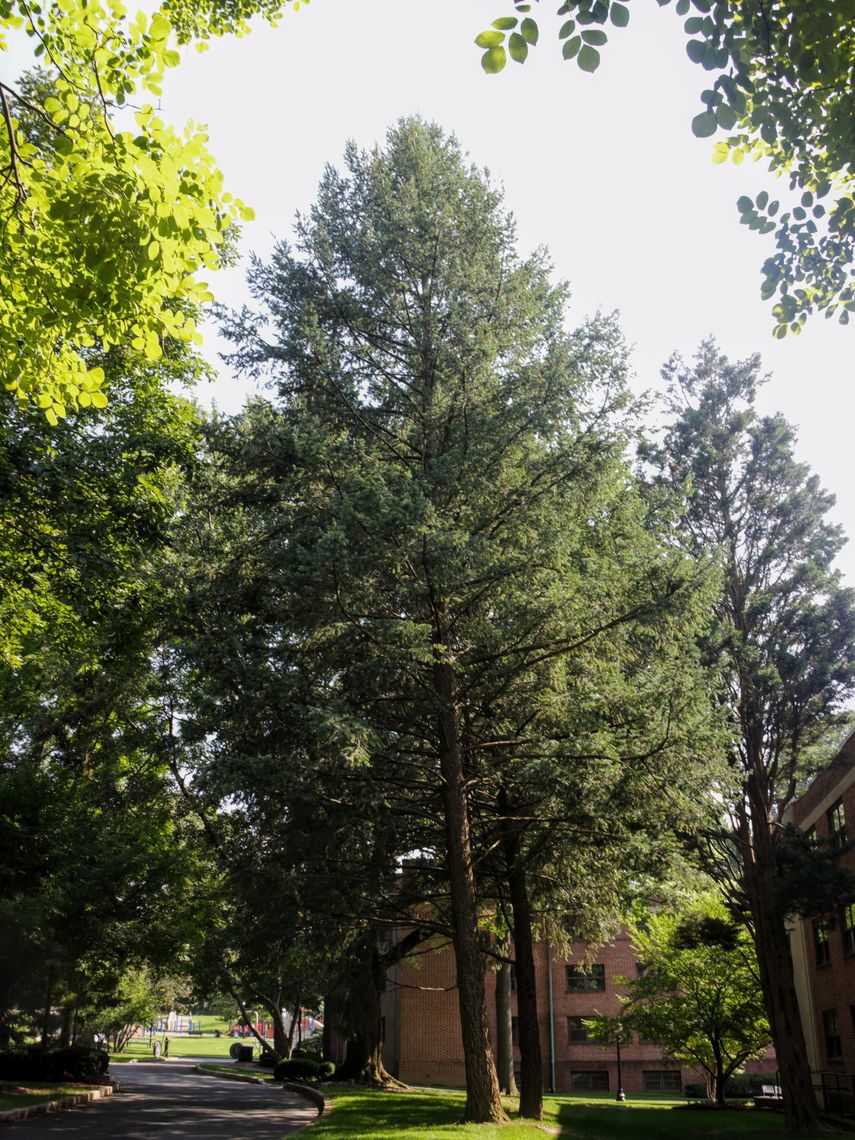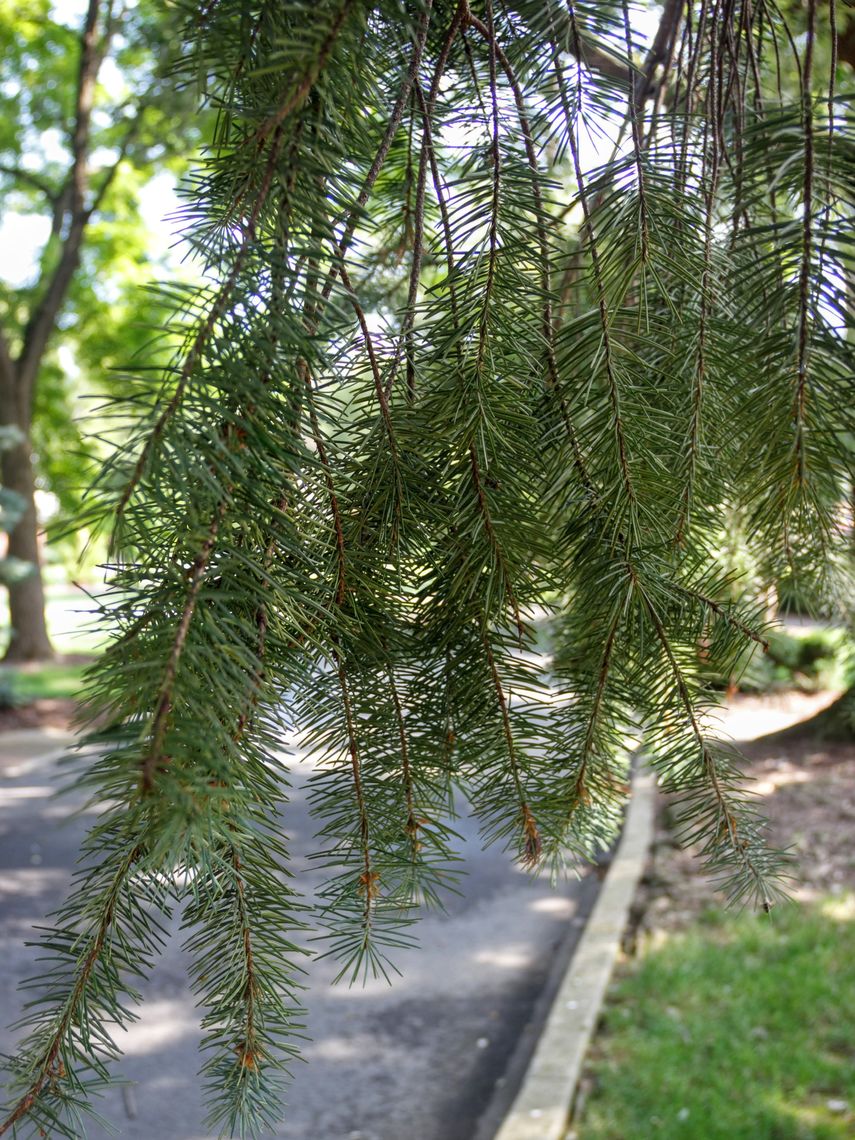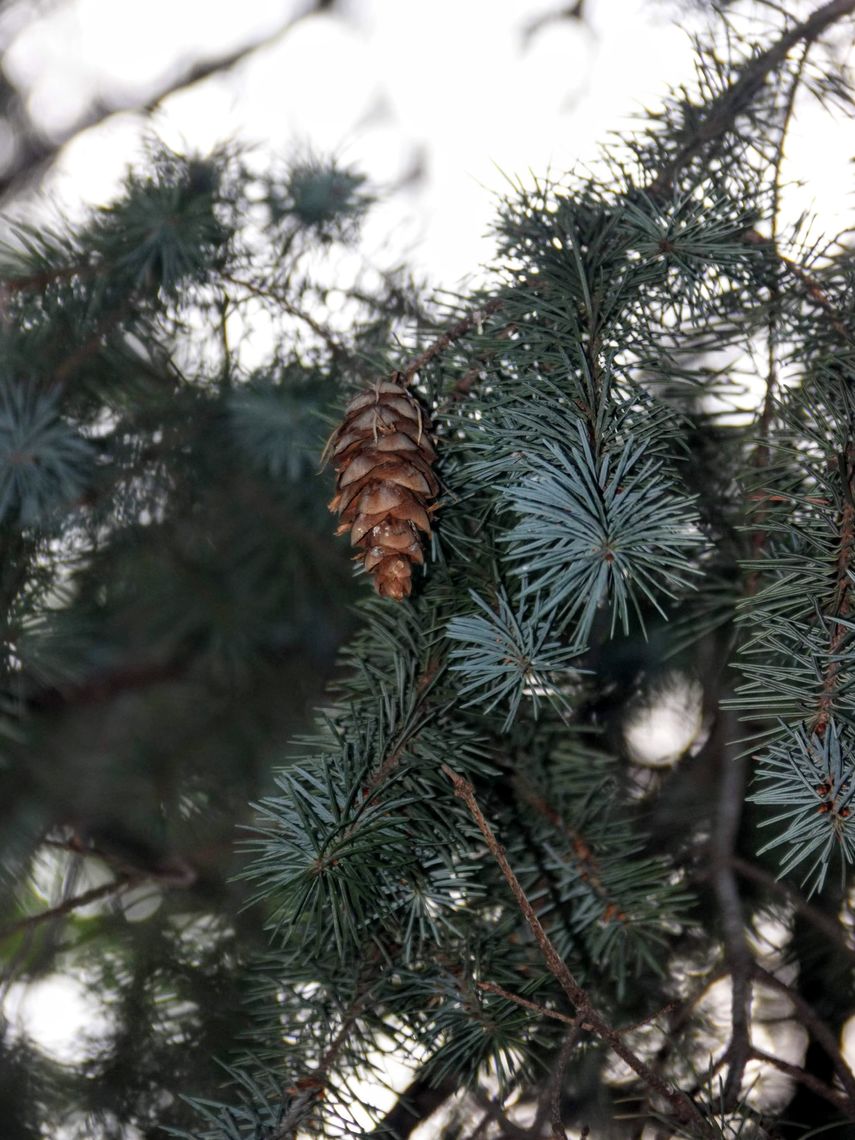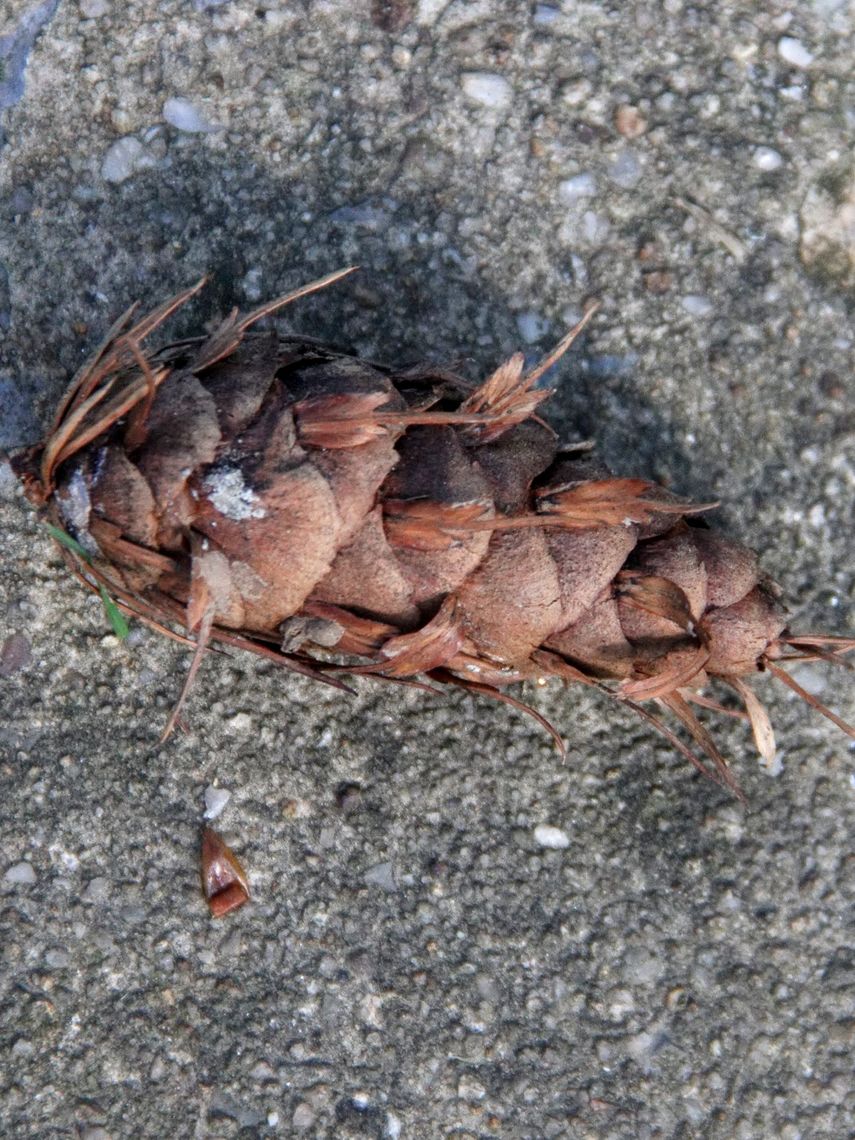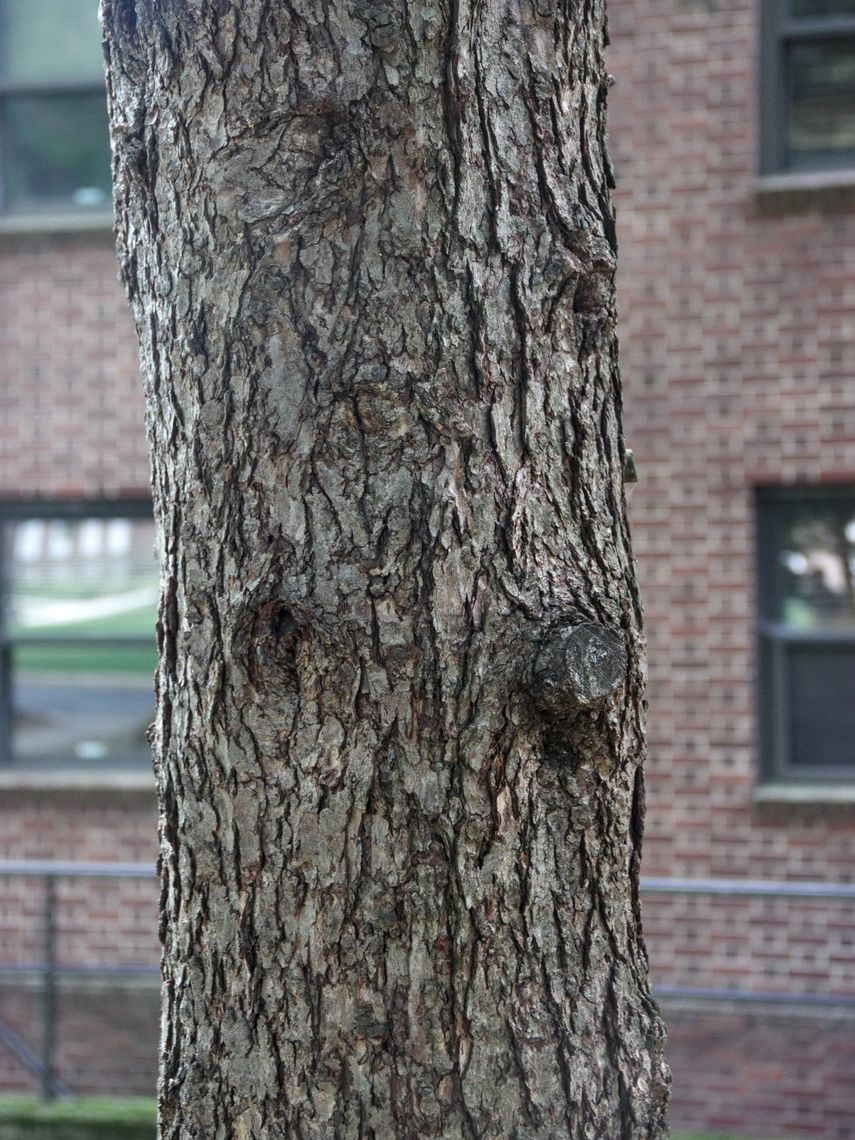Douglas Fir (Pseudotsuga menziesii)
The douglas fir is a large, pyramidal, conifer that can grow over 300 feet high in the wild. In cultivation, the tree grows 40-80 feet high. Its blue-green needles are spirally arranged around the branches. The tree's unique cones have forked scales at the tips, making the tree easy to identify since no other conifer has these types of cones. This tree is an important timber source in the Pacific Northwest and also makes a great Christmas tree. It attracts birds and mammals.
Family: Pinaceae (Pine)
Characteristics: The 1-inch to 1.5-inch-long needles are flat, blue-green with white banded undersides, and are spirally arranged around the branches. Cones are 3-4 inches long and have forked bracts. Bark is red-brown and has fissures. This tree has a pyramidal shape with drooping lower branches and upper branches that slope upwards. With age, this tree will begin to lose its lower branches and only have branches on the top of the tree.
Foliage: Evergreen (foliage present year round)
Geographic Origin: Pacific Northwest, North America (non-native)
Cultivation Notes: Requires high maintenance. Does best in full sun. Prefers medium to wet and well drained soils.
Number on Campus: 21
Sources: Dirr, Morton Arboretum, Missouri Botanical Garden

